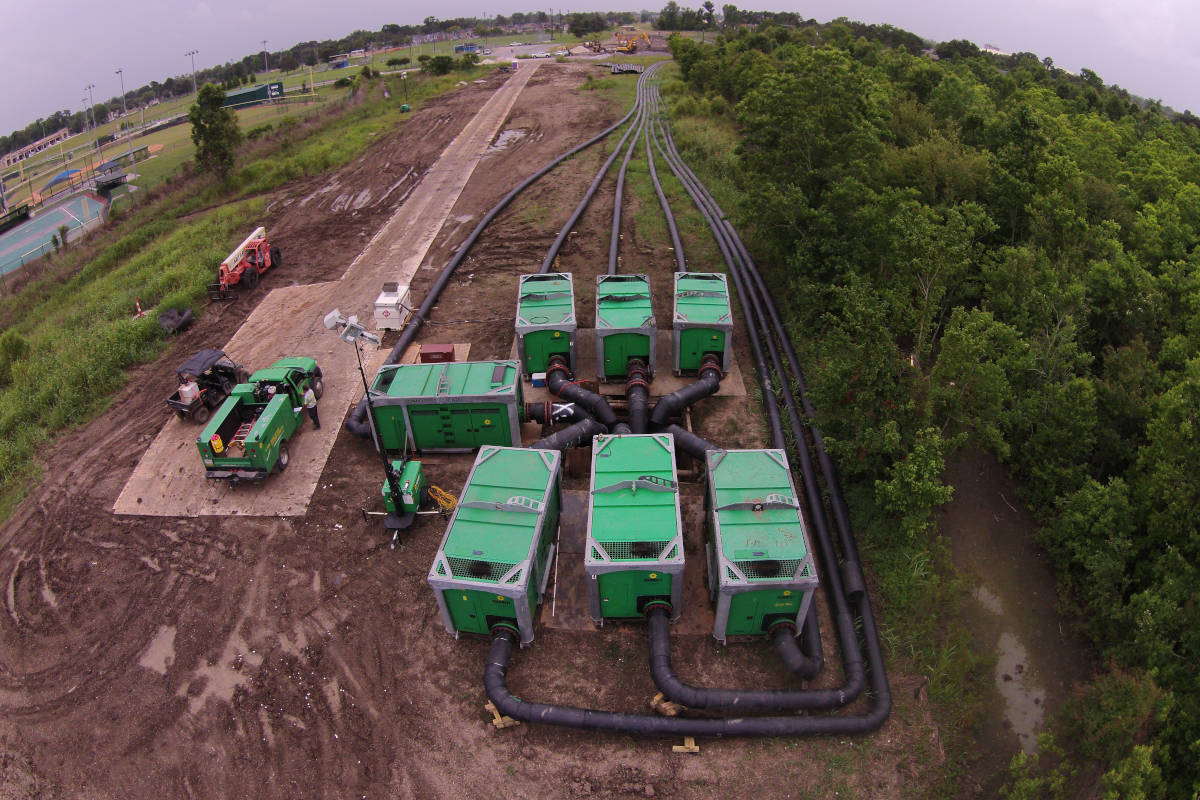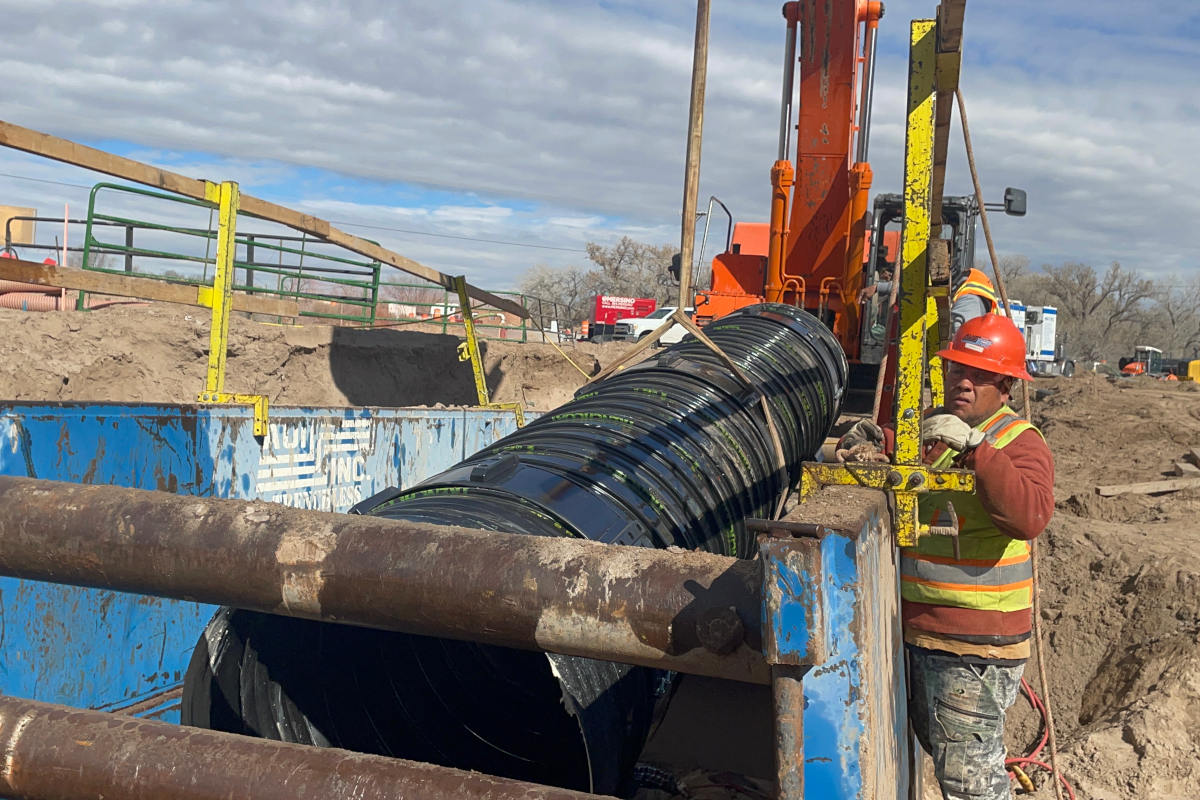
What Lies Beneath

CCFRPM pipe, being lighter in weight, would therefore be easier to install in the tight work zone with smaller equipment.
Northern New Jersey, with its proximity to New York City, has its share of congestion both above and below ground. Utilities including roads, tunnels, ports, as well as water and wastewater make modifications to the existing area problematic. The North Hudson Sewerage Authority (NHSA) operates and maintains the combined sewer collection system in the Northern New Jersey communities of Hoboken, West New York and Union City.
A recent NHSA drainage project, W1234 CSO (combined sewer outfall) has faced numerous construction challenges for this very reason. The project is located just outside the entrance to the Lincoln tunnel in a high-end development built over a former port area. The project was initiated by the NHSA to achieve two goals. The first was to reduce the frequency of roadway flooding. The drainage area that flowed through the existing W1234 Outfall consisted almost entirely of impervious coverage. During intense rainfall events, especially thunderstorms, runoff would collect very quickly and overwhelm the W1234 Outfall to the extent that existing manholes would surcharge by up to 10 ft above the ground surface.
The second goal of the project was to satisfy a mandate through the NHSA’s New Jersey Pollutant Elimination System (NJPDES). This mandate requires that NHSA implement measures that will capture, remove and prevent the discharge of solids/floatables which cannot pass through a bar screen having an opening of greater than 0.5-inches. The Parsippany office of CH2M designed the project. The improvements specified in the W1234 CSO project would rehabilitate 750 lf of sanitary sewer and existing outfall and construct a new parallel sewer outfall.
Geological Challenges
The geology of this area compounded drainage problems and created construction issues. Prior to development as a port facility in the early 1900s, the area consisted of a tidal marsh that had been filled in with miscellaneous material. Once an existing bulkhead had deteriorated, a new bulkhead was simply installed in front of the old bulkhead and the process was repeated over time.

Dating from the early 1900s, the area had been filled in with miscellaneous materials and extended by adding new bulkheads in front of the old ones
Over the past 20 years, the area has been redeveloped and the project area was covered with new high-end residential and commercial buildings, parking and landscaping.
In order to piece together years of changes to the subgrade in the area, seven soil borings were taken during the design of the project. The project area is underlayed with organic silts that provide no bearing capacity for the support of the proposed outfall. Due to the poor soil conditions, the planned diversion structures, manholes and new 96-in. outfall had to be installed on steel bearing piles.
New Outfall & Restoration of Old
The outfall from Park Avenue to Waterfront Terrace consists of a 72-in. diameter brick pipe. At the east side of Waterfront Terrace, the conduit transitioned to a 67-in. high by 81-in. wide high timber and concrete box culvert that was found to be in poor condition and partially collapsed in one area. This reach of the outfall extends for additional 680 lf before discharging into the Hudson River.
Phase 1 of the project had constructed a new 96-in. diameter outfall from beneath the Helix and extended for approximately 900 ft to the Hudson River. The new and existing outfalls were tied together at a junction chamber located beneath the Helix. Once the new outfall was placed into service, all the flow was diverted from the existing outfall.
Mott MacDonald was retained to perform engineering services during construction for the project. Together with the contractor, Rencor Inc., they overcame numerous unforeseen challenges such as numerous underground utilities, traffic control issues, ground water management and buried structures.
One of the key decisions to address these challenges was the change of the originally specified reinforced concrete pressure pipe to centrifugally cast fiberglass reinforced polymer mortar (CCFRPM) pipe through a value-engineering proposal. The owner, North Hudson Sewerage Authority, elected to accept the proposal due to the advantages the CCFRPM pipe provided. CCFRPM pipe, being lighter in weight, would therefore be easier to install in the tight work zone with smaller equipment. The thinner pipe wall also meant that there was additional clearance between the pipe’s outside diameter and the existing infrastructure. Additionally, the pipe could be cut onsite into shorter lengths as needed to maneuver around existing utilities.
“Construction was staged and pipe alignment was tweaked to accommodate existing utilities and another existing CSO outfall. Changing the pipe alignment would have taken much longer time to fabricate special concrete pipe sections. It is much easier and faster to change with an FRP,” said George F. Mesiha, P.E., senior project manager with Rencor.
“We provided 1,280 lf of 96-in. diameter, 35 psi pressure class, 46 psi stiffness class pipe to meet the projects design requirements and project conditions” stated Rene Garcia, P.E., engineer with Hobas Pipe in Houston. “The soils encountered on the project were quite weak and the soil modulus, Ms, used in the design calculations was only 1,000 psi.”

To install the new 96-in. pipe, three trenchless installations were required. The first was under light rail tracks through an existing casing that Rencor had actually placed years ago on a previous light rail project.
Due to the poor geologic conditions, the pipe needed to be installed on a precast concrete slab. The groundwater encountered due to the proximity to the Hudson River was also problematic, and a combination of dewatering and jet grouting was necessary to stabilize the soil around the excavation.
“To install the new 96-in. pipe, three trenchless installations were required. The first was under light rail tracks through an existing casing that Rencor had actually placed years ago on a previous light rail project,” Mesiha said. “The second was under Water Front Terrace, which is a heavily traveled four-lane road and congested with underground utilities. The third was under Harbor Boulevard, which abuts the Hudson, and was not permitted to be closed during construction.”
Following rehabilitation, the existing outfall was reactivated, thereby creating a dual parallel outfall. Since the twin outfalls have been placed into operation, the manhole at JFK Boulevard has not surcharged.
Kevin Wynn, P.E., is with Mott MacDonald and Kimberly Paggioli, P.E. is with Hobas Pipe USA.
Acknowledgements
Owner: North Hudson Sewerage Authority
Funding Agency: New Jersey Environmental Infrastructure Trust
Design Engineer: CH2M
Engineer During Construction: Mott MacDonald
Contractor: Rencor, Inc.




